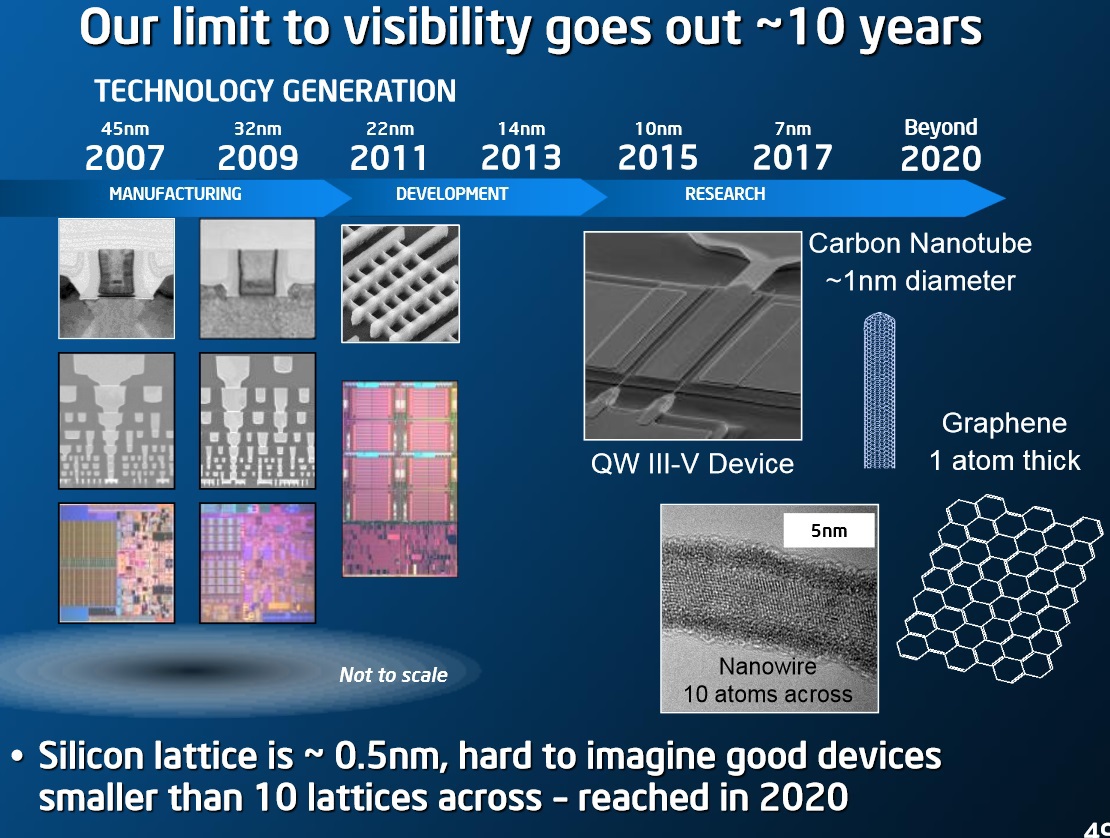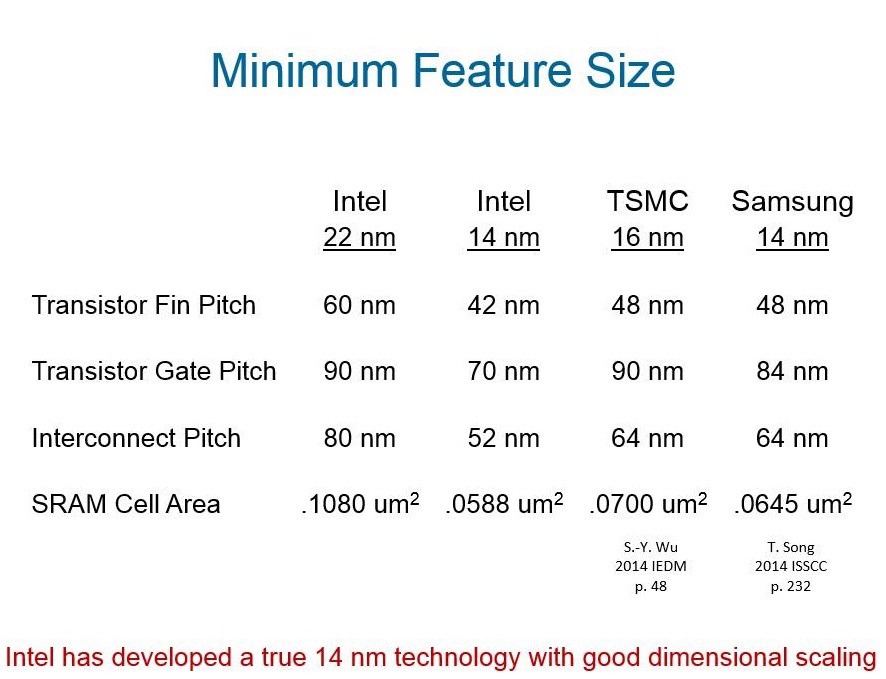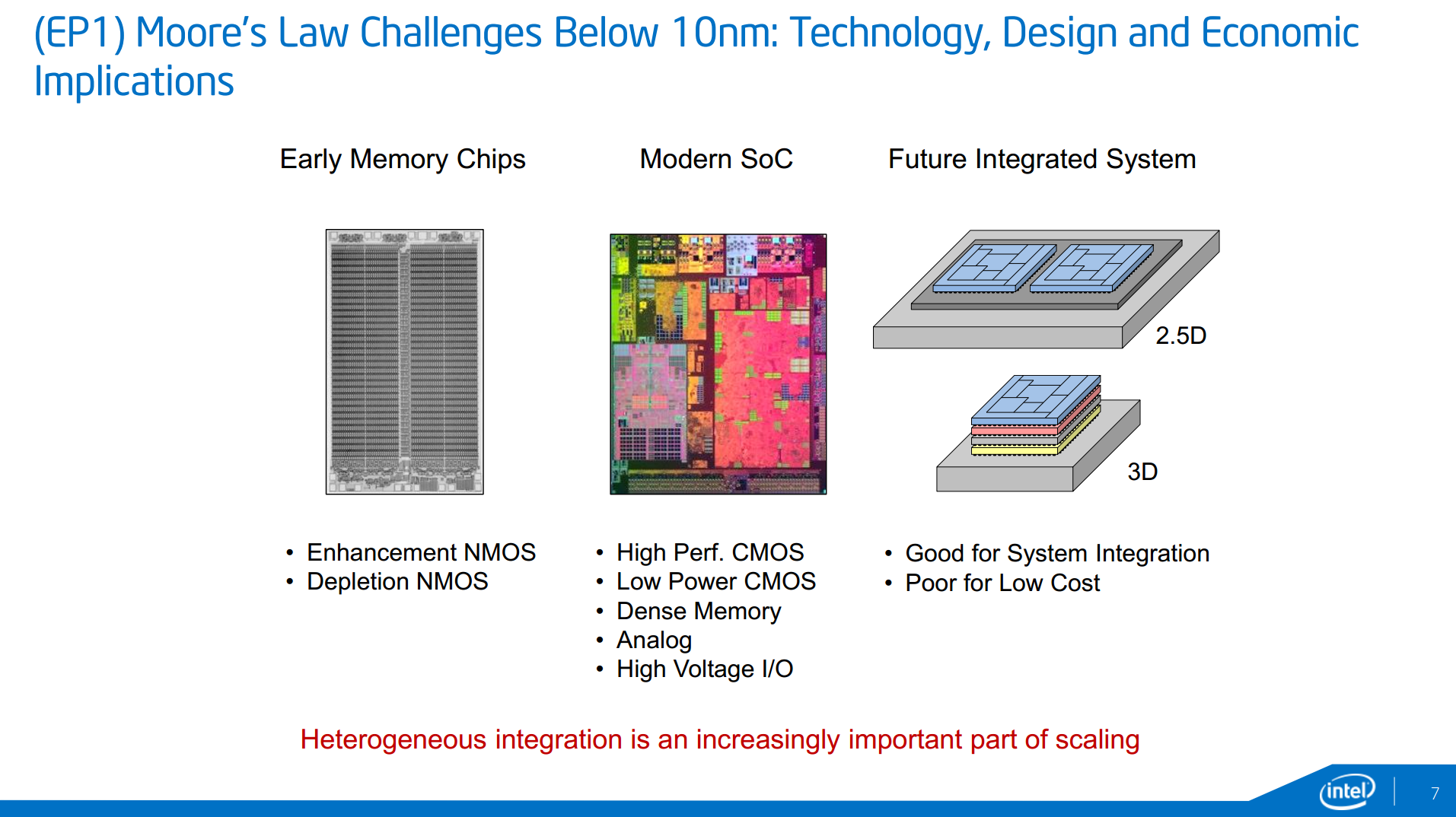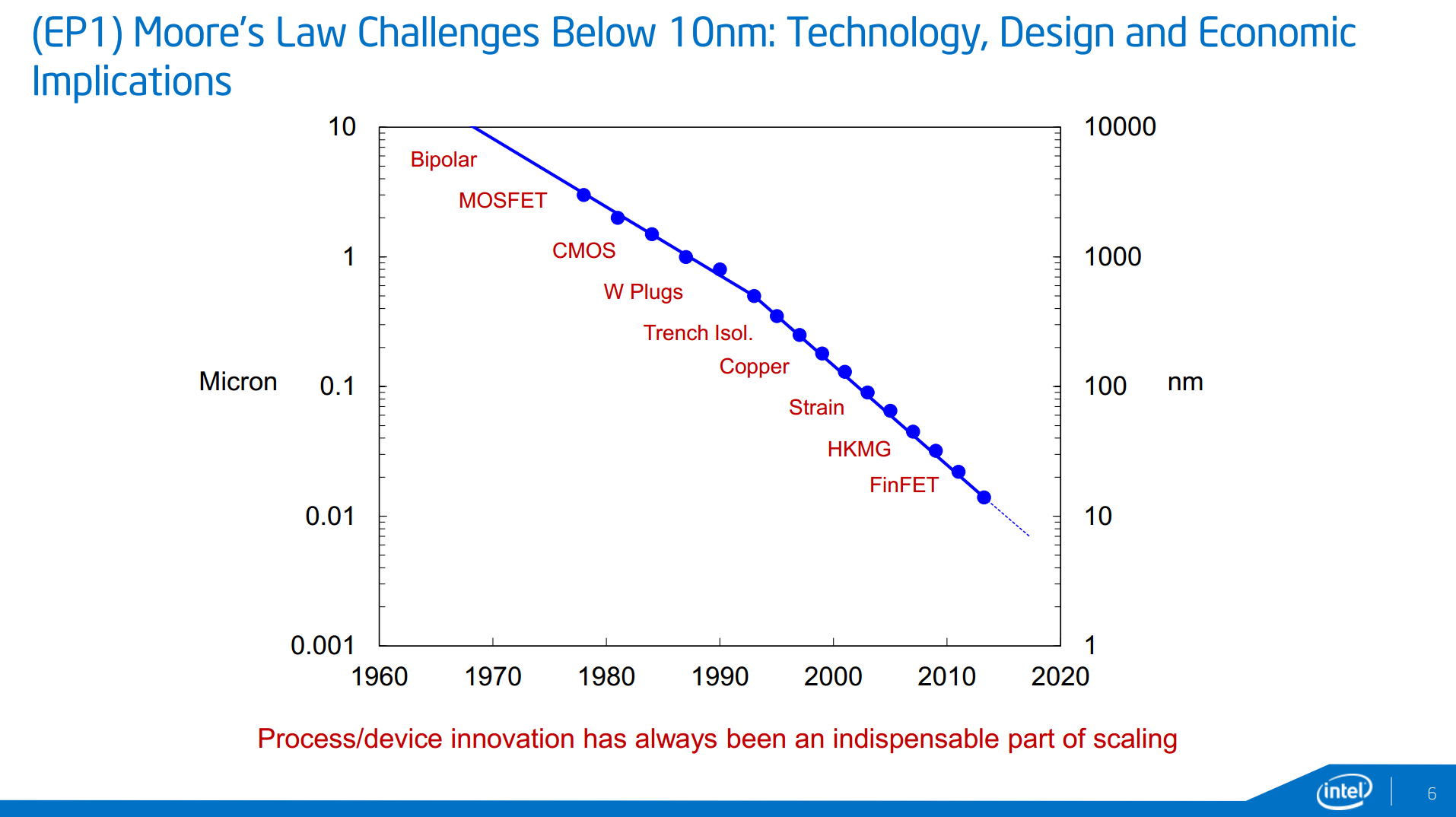Intel showed plans to conquer 10 and 7 nanometers
Further development of microprocessors may require the abandonment of silicon
 The theme of the International Conference on Semiconductor Circuits ( International Solid-State Circuits Conference ) this year sounded like "small chips for big data." The event was held from February 22 to 26 in San Francisco, California, USA. Intel regularly participates in the ISSCC, and the year 2015 is no exception. It is not unusual for giants of the size of Intel and AMD to make an important announcement there. A lot of reports were told about Intel's internal research, which affected the potential for real application of the technology, including a further reduction in the process technology of the microcircuits. In particular, such an exciting topic was touched upon as the attack of Moore's law by 10 nanometers.
The theme of the International Conference on Semiconductor Circuits ( International Solid-State Circuits Conference ) this year sounded like "small chips for big data." The event was held from February 22 to 26 in San Francisco, California, USA. Intel regularly participates in the ISSCC, and the year 2015 is no exception. It is not unusual for giants of the size of Intel and AMD to make an important announcement there. A lot of reports were told about Intel's internal research, which affected the potential for real application of the technology, including a further reduction in the process technology of the microcircuits. In particular, such an exciting topic was touched upon as the attack of Moore's law by 10 nanometers.
Intel is proud to conquer 14 nanometers. This achievement came with difficulty and delays of 6-9 months, depending on the class of the product, but the company still managed to achieve superior Samsung and TSMC indicators. Intel believes that only they managed to achieve the real 14 nm: this is indicated by the smaller sizes of individual elements and other characteristics, for example, the size of the SRAM cell.
Intel predicts that there will be improvements in the transition to 10 nm, but there was no specific timeline for the start of deliveries. If you focus on previous plans, then 10 nanometers will appear on the shelves at the end of 2016 or the beginning of 2017. 10 nm and further reductions will be very difficult. Intel learns from its mistakes when working on 14 nm and hopes to avoid the same rake when moving to 10.
')

The question also referred to the cost of the process. On the chart by Mark Bohr, you can see how the reduction of individual elements. You may notice that 14 nanometers showed a slightly larger drop in value than expected. This was achieved by optimizing the lithography process and using masks. And let the 10 nanometers steps of applying masks be even more, there will be no delays that we observed in the situation with 14. Intel realized that 14nm delays were caused by an increased number of tests and checks. As a result of the correction, the test capacities of the 10 nanometer process technology work one and a half times faster than in the case of 14 nm. Even if the fixed costs of 10 nanometers are higher, the cost per transistor will decrease using the same lithography technology. Intel is considering a deep ultraviolet , but does not want to use it without extreme necessity due to its slower development process than was expected.

In addition, the Intel research team talked about the use of 3D technology (layer by layer) and 2.5D (separate layers on the substrate). These solutions may allow more transistors to fit in: limit power consumption (2.5D) in some cases or build more compact structures (3D). In particular, Intel considers scenarios in which logical chains of different production methods are stacked instead of implementing a similar one on a single layer. This may appear in mobile devices - smartphones, tablets.

The most interesting development of technology 14 nanometers can be SRAM: Intel has reached 84-megabit storage with the smallest cell size in the world - 0.050 µm². This is 14.5 megabits per square millimeter. Compared with 22 nm, the required voltage has fallen: 0.6 V for 1.5 GHz, 1 V for 3 GHz.

Intel achieved very economical data transfer: 10 Gbit / s required only 5.9 pJ per bit

10 nanometers will require innovations, and the transition to seven will be possible only with new materials and processes. But nothing concrete was named, although III-V semiconductors were discussed. We are talking about combinations of elements of the third group of the periodic table (aluminum, gallium, indium) with elements of the fifth group (nitrogen, phosphorus, arsenic, antimony). Their electron mobility is higher than that of silicon, which allows reducing the size of transistors. Intel began to look at this side a few years ago; perhaps in a few years, the core of computers will be a chip on gallium-indium arsenide.

Further progress is already quite futuristic: deep ultraviolet, carbon nanotubes, graphene and nanowires are possible.
Based on Ars Technica , ExtremeTech and AnandTech .
Source: https://habr.com/ru/post/377005/
All Articles